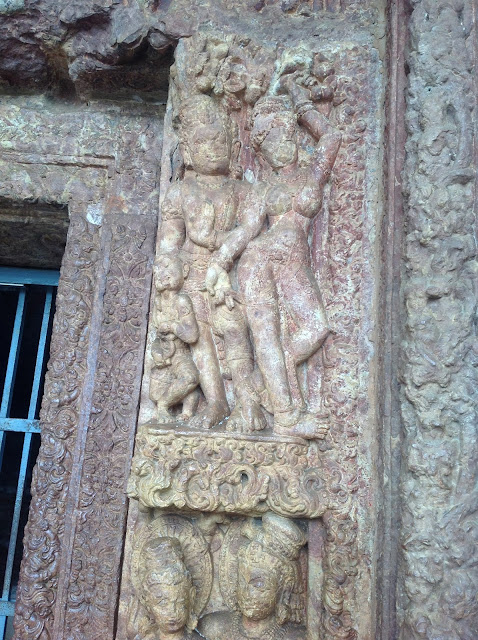Representation of music (i.e., various Raag and Ragini) and festivals has been beautifully done in ancient themed Rajasthani paintings. The first photo shows rain music (i.e., raag 'megh malhar') i.e., a sound, in the form of painting i.e., a vision. The raag 'megh malhar' is associated with rains and therefore the raag, personified as a dark (alludes to dark rain clouds) complexioned man, is pictured in the backdrop of rain clouds. The painting is currently housed in Albert Hall, Jaipur (State Museum of Rajasthan).
The second painting shows ragini bhairavi (bhairavi in Sanskrit means 'shiva') worshipping shiva linga. Other raginis are shown as companions.
The second painting shows ragini bhairavi (bhairavi in Sanskrit means 'shiva') worshipping shiva linga. Other raginis are shown as companions.
The following painting shows Raag Deepak (deepak refers to wicker lamp) in painting form.



















































